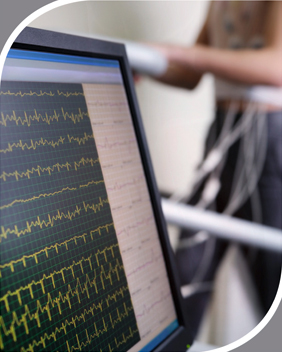Tests and Diagnosis of Bradycardia

Once any symptom of bradycardia appears it is highly advisable to visit a cardiologist as soon as possible. The first step is to identify the main disorder which provoked bradycardia.
Bradycardia diagnosis includes:
- Electrocardiography (ECG) – helps detect rare heart rate, as well as the presence of any heart blockage;
- Holter monitoring – applied if no bradycardia episodes are detected during the standard ECG recording. This procedure is performed during the day;
- Echocardiography (heart ultrasound) – helps determine the decrease in ejection fraction, an increase in heart size, and sclerotic changes in the myocardium;
- Bicycle ergometry – helps evaluate heart rate increases associated with physical activity;
- Laboratory tests - complete and biochemical blood count, test for thyroid hormones;
- Control of the heart rate at home;
- Electrophysiological study.
Often bradycardia may develop with little to no symptoms; therefore, the onset of a condition such as "chronic fatigue" is a compelling reason to visit your cardiologist.
Next chapter: Bradycardia treatment and prevention
Featured Articles
A stroke can cause problems with communication if there is damage to the parts of the brain responsi ...
People with irregular bowel movements often complain about elevated blood pressure that doesn’ ...
A mini-stroke is a temporary disruption in blood flow to the brain, spinal cord or retina that doesn ...
It is well known that rheumatoid arthritis is an auto-immune disease that primarily affects joints. ...









